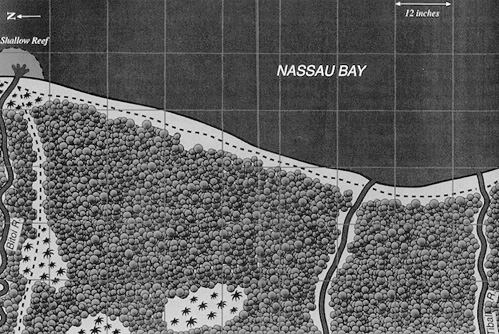Introduction
Allied strategy in the Southwest Pacific was often dictated by shortages of troops and shipping. The Allied landings at Nassau Bay were one example of these strategic constraints influencing combat operations inasmuch as available shipping influenced the composition of the attack force and the choice of landing site. Though the immediate objective of the landing was to open a sea based supply line to Australian troops operating inland, while also threatening the Japanese base at Salamaua to the north of Nassau Bay, the landings are an excellent example of the type of operation commonly carried out along the New Guinea coast during 1943-44.
The Nassau Bay landing is also a superb case study of the ways that environment can influence the conduct of combat operations. All too often wargamers ignore the effects of weather in their gaming, playing games in perfect weather and excellent visibility. The Nassau Bay landing illustrates the problems that can occur when weather and local terrain conditions are ignored, or differ drastically from the expectations of far removed operational planners.
Map

Point Break The Allied Landing at Nassau Bay June 30, 1943
Back to Table of Contents -- Command Post Quarterly # 13
To Command Post Quarterly List of Issues
To MagWeb Master Magazine List
© Copyright 1997 by Greg Novak.
This article appears in MagWeb.com (Magazine Web) on the Internet World Wide Web.
Other articles from military history and related magazines are available at http://www.magweb.com
